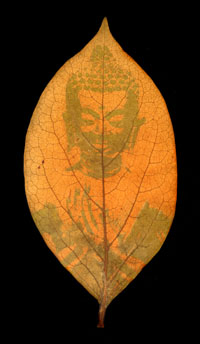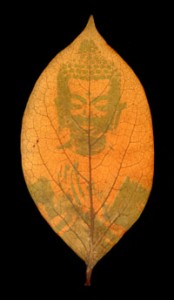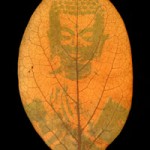
The Ransom Center’s photography collection was pleased to acquire several pieces by emerging artist Binh Danh this past year. Danh has pioneered a fascinating mode of printing directly on plant leaves through the natural process of photosynthesis. By placing a negative in contact with a living leaf and then exposing it to sunlight for several weeks, the image literally becomes part of the leaf. Danh then permanently “fixes” the image by casting it in resin. He calls the finished piece a “cholorophyll print.” These compelling objects appear very contemporary, but also harken back to the botanical photogenic drawings created by William Henry Fox Talbot at the dawn of photography.

Born in Vietnam in 1977, Binh Danh immigrated to the United States with his family when he was a young child. Images from the Vietnam War are prevalent in his work, providing a unique connection between process and subject matter. As he explains, “This process deals with the idea of elemental transmigration: the decomposition and composition of matter into other forms. The images of war are part of the leaves, and live inside and outside of them. The leaves express the continuum of the war. They contain the residue of the Vietnam War: bombs, blood, sweat, tears, and metals. The dead have been incorporated into the landscape of the Vietnam during the cycles of birth, life, and death, through the recycling and transformation of materials, and the creation of new materials. Since matter is neither created nor destroyed, but only transformed, the remnants of the Vietnam and American War live on forever in the Vietnamese landscape. This body of work addresses this continuum.” The Ransom Center acquired two of Danh’s war-related chlorophyll prints.
Danh’s notion of the interconnectedness of life finds articulation in some of the other images he has created. In addition to the two war-related prints, the Ransom Center also acquired two prints of night skies, one of Buddha, and one of a butterfly overlaid with text.
“Having my work as part of the Harry Ransom Center validates its importance to the history of photography,” said Danh. “The collection at the Harry Ransom Center is a treasure that I am honored to be a part of.”





